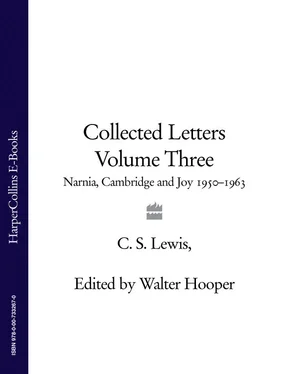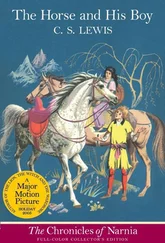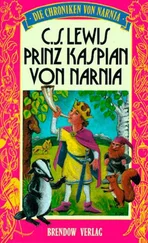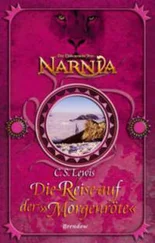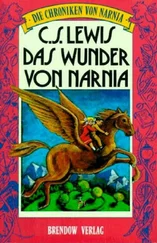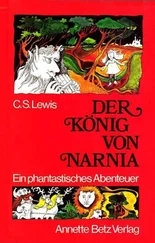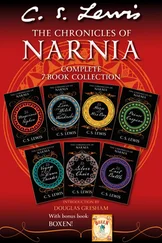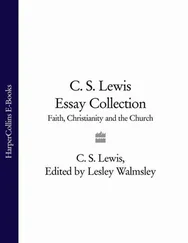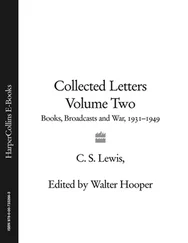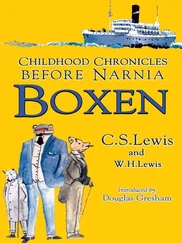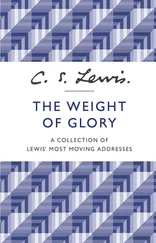THE COLLECTED LETTERS OF C. S. Lewis ———Volume III——— Narnia, Cambridge and Joy 1950-1963 EDITED BY WALTER HOOPER

Preface
Abbreviations
Letters:
Chapter 1 - 1950
Chapter 2 - 1951
Chapter 3 - 1952
Chapter 4 - 1953
Chapter 5 - 1954
Chapter 6 - 1955
Chapter 7 - 1956
Chapter 8 - 1957
Chapter 9 - 1958
Chapter 10 - 1959
Chapter 11 - 1960
Chapter 12 - 1961
Chapter 13 - 1962
Chapter 14 - 1963
Supplementary Letters
‘Great War’ Letters
Biographical Appendix
Index
About the Author
Books By C. S. Lewis
Copyright
About the Publisher
This is the third and final volume of the Collected Letters of C. S. Lewis. In the same way that the third novel of Lewis’s interplanetary trilogy, That Hideous Strength , grew to be twice the length of the first story, Out of the Silent Planet , so it is with Volume III of his correspondence, which is almost twice as long as Volume I. It would, I admit, have been neater to have had three equally sized books, but this is the way things have turned out, and I hope readers will welcome the many extra letters in this bulky concluding collection.
When it was agreed years ago between the publishers and the Lewis Estate that there would be only three volumes of letters, it was left unsaid how long a volume might be. I was halfway through editing Volume I when someone at HarperCollins suggested that the Collected Letters might consist of three paperback volumes of 325 pages each. This was not acceptable to the Estate because it would mean publishing only about a third of the letters known to exist, and leaving the others to an uncertain future. Lewis was one of the last great letter-writers and we felt it would be a pity not to publish all his letters. And so I persevered with Volume I, hoping that a book comprising about a third of the letters would be accepted by HarperCollins.
However, when the time came to send the publishers the typescript of the first volume, a different person at HarperCollins was in charge. This was lames Catford, of whom I’d heard many good things. I nevertheless feared he would turn the book down if it were very long, and I cut out a few letters. As I explained in the Preface to Volume I, ‘To prevent the book from being too long it was necessary to leave out a few letters, but the volume contains about 95 per cent of the letters from that period.’ I explained that some of the letters I omitted were ‘weekly “regulation” letters from lack to his father from his various schools’, while others were letters to Lewis’s great friends Owen Barfield and Cecil Harwood, in which he ‘was primarily arguing philosophical points or criticizing his correspondents’ poetry’. 1
On 19 April 1999, a few days after sending the typescript of Volume I to HarperCollins, I went up to London to meet James Catford, who would be guiding it through the press. I expected him to complain of it being too long, and I could not have been more surprised when he said: ‘Congratulations! We’re into Big Books! ’
James gave the Collected Letters exactly the lift it needed, and although he left soon afterwards to become chief executive of the Bible Society, those who followed him at HarperCollins have supported the project with equal enthusiasm. More than that, they have shared my keenness to include in the Collected Letters all the letters that have come to light. Volume I, Family Letters , covered the period from Lewis’s first letters in 1905 up to his conversion in September 1931. Volume II, Books, Broadcasts and War , covered the period from October 1931 up to 1949 when Lewis wrote The Lion, the Witch and the Wardrobe and was finding his way into Narnia, and I tried to include all the letters that fitted into that second period.
By the time I reached Volume III, with its triple theme, Narnia, Cambridge, Joy , covering 1950 up to Lewis’s death in 1963, David Brawn, the projects director at HarperCollins, and Chris Smith, commissioning editor, were as enthusiastic about the project as I. They liked my idea of including in Volume III a Supplement of those letters which were deliberately omitted from or, for various reasons, failed to get into Volumes I and II. Apart from the early letters to his father and those to Barfield and Harwood, for reasons of space I had also omitted Lewis’s letters to various periodicals, such as the Times Literary Supplement and the Church Times; these letters too are now included in the Supplement.
Besides the Supplement, there are the ‘Great War’ Letters dating from 1927-8. They are the only part of Lewis’s dispute with Owen Barfield about myth, imagination and anthroposophy conducted by letter. Long before the ‘Great War’ began in 1923, Lewis dismissed Christianity as a ‘myth’. Then, in February 1923, while preparing for his examinations in Greats, he witnessed a man he liked go mad. 2 This was Mrs Moore’s brother, Dr John Askins, who Lewis explained ‘had flirted with Theosophy, Yoga, Spiritualism, Psychoanalysis, what not?’ 3 In the little house Lewis shared with Mrs Moore he helped to hold Dr Askins down ‘while he kicked and wallowed on the floor, screaming out that devils were tearing him and that he was that moment falling down into Hell’. 4 Largely as a result of this Lewis assumed what he called his intellectual ‘New Look’. ‘There were to be,’ he insisted,
no flirtations with any idea of the supernatural, no romantic delusions. In a word, like the heroine of Northanger Abbey, I formed the resolution ‘of always judging and acting in future with the greatest good sense? And good sense meant, for me at that moment, a retreat, almost a panic-stricken flight, from all that sort of romanticism which had hitherto been the chief concern of my life. 6
Lewis had just arrived at this ‘New Look’, with its rejection of anything supernatural, when Owen Barfield and Cecil Harwood became followers of Rudolf Steiner and the theosophical beliefs expressed in anthroposophy. ‘I was hideously shocked,’ said Lewis:
Everything that I had laboured so hard to expel from my own life seemed to have flared up and met me in my best friends. Not only my best friends, but those whom I would have thought safest…As I came to learn…what Steiner thought, my horror turned into disgust and resentment. For here, apparently, were all the abominations; none more abominable than those which had once attracted me. Here were gods, spirits, after-life and pre-existence, initiates, occult knowledge, meditation…There was no danger of my being taken in. But then, the loneliness, the sense of being deserted. 7
The ‘Great War’ was to last until 1931, when Lewis converted to Christianity.
In a word, HarperCollins and I were determined that the three volumes would contain not a ‘selection’ of Lewis’s letters but all . The reader can see from the frequency of the abbreviations ‘BOD’ and ‘W’ that most of the letters are from the two major collections in the Bodleian Library and the Wade Center. But for the purpose of this volume, the net was thrown very wide, and this volume contains the letters I have found in all the Lewis collections I know about. When I began work on Volume III, I guessed that, with the addition of the Supplement, it would be only a few hundred pages longer than the other two. However, as word spread that this would be the final volume, I received numerous Lewis letters preserved in private collections. And so the book grew to be the size it is.
Читать дальше
